More and more businesses are realizing the immense impact of positive customer experience has on loyalty, operational costs, and long-term growth.
By leveraging the right customer engagement platform or solution, brands can significantly enhance their customer interactions.
Enhancing your customer experience (CX) can significantly further customer retention and impact your financial success. According to the Temkin Group, even a modest improvement in CX can generate an average revenue increase of $823 million over three years for a company with $1 billion in annual revenues.
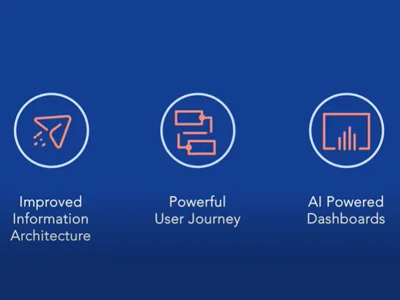
Furthermore, investing in top-notch customer engagement software extends beyond just revenue. It yields operational cost reductions, and customer lifetime value as highlighted by Harvard Business Review. Unhappy customers can be costly, which makes focusing on CX an effective way to mitigate such expenses.
10 Tips on How to Improve Customer Experience
1. Listen to your employees
You might find it surprising, but the truth is that companies that excel at customer experience (CX) actually begin by empowering their employees.
There’s a significant link between self service options, having empowered employees and creating happy customers. Let’s picture this scenario: You’re on a call with a customer service agent, and after discussing your issue for a while, you ask for a discount.
The agent genuinely wants to help, but they need to get approval from their manager. At this point, you’re feeling tired and just want the conversation to be over.
It would be so much smoother if the agent had the authority to use their judgment, approve the discount, and quickly resolve your issue right then and there.
Here’s what you can do:
Start by understanding what might be blocking your employees from delivering exceptional customer experiences. Conduct an employee pulse survey to uncover any common pain points in their customer experience strategy. Then, use those valuable insights to review and improve systematic processes, like contact center protocols and CRM software.
Also, take a closer look at your company culture. Are leaders, managers, and employees all on the same page, sharing clearly understood values that support excellent customer service experiences? Is there more you can do to foster a customer-centric culture throughout your organization?
2. Empower Your Employee’s Ideas
The employees who directly interact with customers are in a pretty unique position. They’re the ones where the rubber meets the road, making sure your brand promises are delivered. They’re also the key players when it comes to understanding and conveying customer expectations, moods, and perceptions. An efficient customer engagement software can further bridge any communication gaps.
When that crucial connection starts to suffer, it affects not only your understanding of customers but also their perception of you. That’s why it’s vital to make sure your employees feel valued. When they do, they become more engaged at work and more eager to go the extra mile for customers.
Here’s something eye-opening: Our latest employee engagement trends research survey revealed that employees who feel ignored by their managers are twice as likely to be actively disengaged. So, it’s crucial to show them they’re valued by listening to their opinions and ideas.
Here are a couple of things you can do:
First, make sure to run regular pulse surveys to collect valuable data on the employee experience. But why stop there? Extend this by introducing an employee suggestion system that collaborates with your customer engagement platform, ensuring consistent feedback loops.
But here’s the kicker: It’s not enough to just collect feedback. You need to take action on it! When your employees see a clear connection between what they provide and the changes you make as a result, it highlights just how important they are to you.
3. Leverage technology to create cutting-edge customer experiences
You won’t believe what AI and machine learning can do for your customer experiences! These technologies seem tailor-made to revolutionize the customer engagement platform landscape.
Imagine having chatbots available around the clock to assist customers or using natural language processing to understand the true meaning behind their free-form text messages. With state-of-the-art customer engagement software, insights are garnered swiftly, enabling unprecedented levels of personalization and scalable service.
The proof is in the pudding. Big businesses are jumping on the bandwagon and reaping the benefits. Just take a look at Domino’s Pizza, where customers can order their favorite pie through Domino’s Facebook Messenger chatbot. And eBay is taking it a step further by helping customers scour the entire marketplace for the best deals, like having a personal shopper at your fingertips.
It’s clear that AI and related digital technologies really can make life easier for your customers and open up endless possibilities for product innovation.
4. Think Holistic & Embrace Omnichannel Approach
Say goodbye to the days of being tied to a desktop computer to interact with a brand. Now, more than half of web traffic comes from mobile devices, making multi-device digital journeys the new norm.
But it’s not just about having a consistent experience across different devices. Today’s customer experience leaders understand that customers engage with brands through various online and offline channels, often switching back and forth multiple times. They recognize that every step of the digital customer experience journey, no matter how unpredictable or winding, needs to be seamlessly connected and consistently delivered.
Incorporating an omnichannel approach in your customer engagement tool arsenal is transformative for your business strategy. By taking this crucial shift, you’ll create a seamless, interconnected customer journey that leaves a lasting impression.
5. Personalized Interactions is the Name of the Game
Customers today crave personalized interactions, and it’s no wonder why! Research from Epsilon reveals that a whopping 80% of consumers are more likely to make a purchase when brands offer a personalized customer experience. Additionally, Accenture found that 81% of consumers desire brands that truly understand them, knowing precisely when to approach them and when to give them space.
Incorporating personalization isn’t just a trend; it’s a powerful customer engagement tool that refines customer pathways and solidifies the bond between the brand and its audience. Just think about those marketing emails that come loaded with tailored recommendations and exclusive vouchers based on your purchase history. Or perhaps you’ve enjoyed the convenience of setting up your content preferences on a website through your user profile. That’s the power of personalization in action.
Here are a few exciting ways you can leverage personalization:
1. Use customer data to personalize survey questions, creating a more tailored and engaging experience.
2. Employ geolocation technology as a customer engagement solution, customizing your propositions based on the location of individual customers.
3. Provide thoughtful recommendations based on customers’ past purchases, guiding them towards products or services they’ll love.
4. Personally follow up with customers who have shared their feedback through surveys, showing them that their opinions truly matter.
5. Take your website to the next level by offering dynamic content that adapts to user preferences, making each visit feel uniquely relevant.
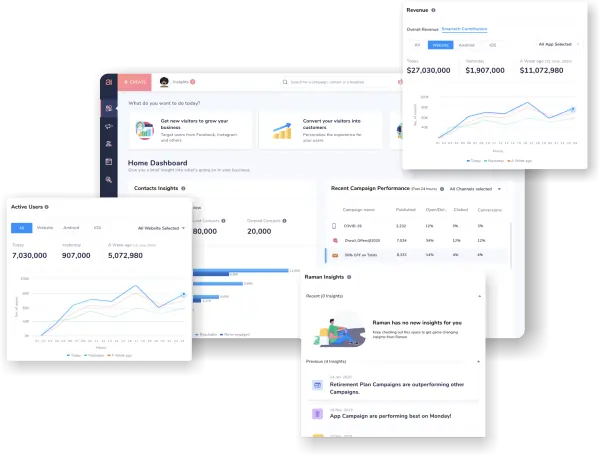
6. Set a top-down mindset
When it comes to creating customer-centric organizations, it all starts from the top. CX and company leaders play a crucial role in modeling the importance of putting customers first and inspiring employees to follow suit.
Let’s take a page out of Walt Disney’s book. He would stroll around Disneyland Park, immersing himself in the customer experience and making adjustments to ensure perfection. The result? The Disney brand we know and love today, which is deeply rooted in customer focus. It all begins with leaders setting an example.
Developing a customer-first culture requires leadership exemplars. From the highest ranks to the shop floor, values, and behaviors must be consistently embraced and put into action at every level of the organization.
Start by recognizing the immense value and impact of a customer-centric culture. Allocate resources and dedicate efforts to make the outstanding customer experience a top priority. It’s an investment that will pay off in spades as you create an organization that truly understands and meets the needs of your customers.
7. Dive into the customer’s journey
Customer journey mapping is like creating a visual guide that tells the story of your customer’s experiences, needs, and perceptions as they interact and build a relationship with your brand.
When integrating journey maps with essential metrics using a customer engagement tool, a transformative realization unfolds. You gain deeper insights into your overall customer experience and uncover areas where issues exist and opportunities await. It’s like having a treasure map that leads you straight to the heart of your CX success.
Harness the potential of journey mapping further. Utilize these visual aids as a customer engagement solution to refine immediate customer interactions, conceptualize enhanced experiences for your clientele, and spearhead impactful change within your enterprise.
8. Keep open-ended feedbacks
Customer experiences become truly powerful when we hear them expressed in the customers’ own words. There’s something incredibly insightful about listening to their thoughts and sentiments, especially when we dive into those open-text responses on surveys. It’s like unlocking the hidden treasures behind their actions and gaining a deeper understanding of what drives their decision-making.
Now, let’s be real. In an ideal world, we would sit down with each and every customer, engaging in meaningful conversations about our brand and eagerly listening to their answers. But let’s face it, that would take forever. Until recently, businesses were limited in their ability to process and leverage the wealth of natural language feedback they receive.
Thanks to advancements in customer engagement software, there’s now a means to process such feedback on a grand scale, unveiling an unparalleled depth of customer insight. It’s like having a supercharged listening device that can even make future predictions based on your data.
9. Enhance the Customer Satisfaction with Customer Service
Customer service is the backbone of a remarkable customer experience, and it holds incredible power as a differentiator in the eyes of your customers.
You see, people don’t just choose to buy from you because your product meets their needs. They choose you because they have confidence that whenever they need support, you’ll be there for them. And guess what? The data proves it time and time again.
Customers who receive exceptional service not only make repeat purchases but also remain loyal to brands for the long haul.
Now, let’s talk about how you can elevate your customer service game. It’s all about a few key ingredients.
First, your employees need to be carefully selected, trained, coached, and supported to develop their customer service skills and behaviors.
Second, your business culture should emphasize the delivery of high-quality experiences rather than solely focusing on speed and efficiency. And last but not least, your business infrastructure, including CRM tools and experience management platforms, should be flexible, scalable, and user-friendly.
Here are some practical steps you can implement to protect customer data and enhance your customer service:
1. Offer multiple channels for customer support, aligning with your omnichannel approach to ensure convenience and accessibility.
2. Optimize wait and response times by employing a strategic blend of digital and in-person support, finding the right balance for your customers’ needs.
3. Always strive to close the loop with customers, turning every interaction into a positive outcome and leaving them feeling satisfied.
4. Leverage benchmark metrics like NPS (Net Promoter Score) utilizing them within your customer engagement platform to perpetually assess and enhance service efficacy.
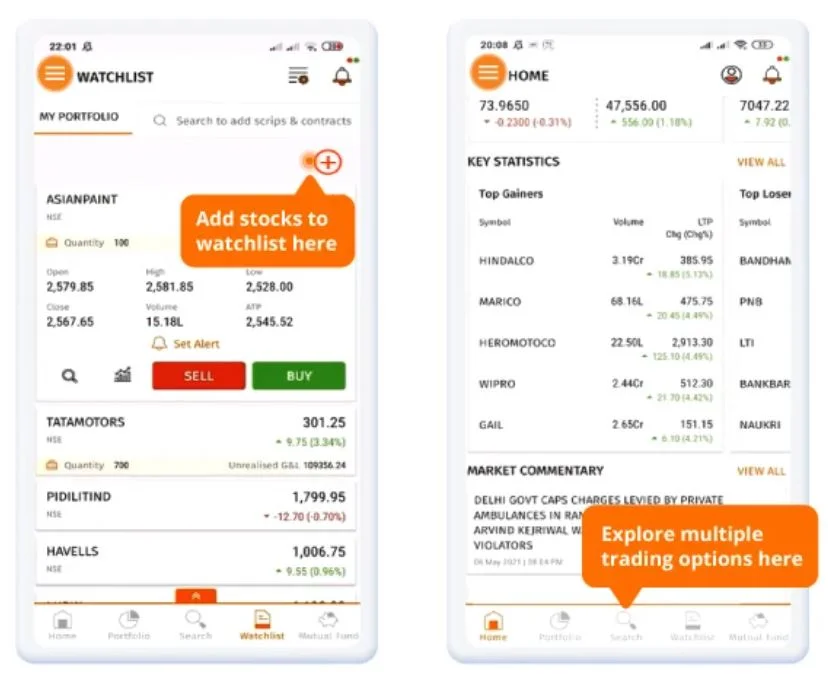
10. Create and execute Voice of the Customer campaigns
The Voice of the Customer (VoC) is like a treasure trove of feedback that reveals your customers’ experiences and expectations of your products or services. By harnessing this with a customer engagement platform, you can keenly attune to their requirements, excel in fulfilling their desires, and perpetually refine what you offer.
Now, picture this: Establishing a comprehensive customer engagement tool to gather and utilize customer feedback will disclose a myriad of crucial consumer insights. You’ll gain a deeper understanding of what your customers truly want, allowing you to develop better products, enhance your services, and ultimately attract and retain a loyal customer base. It’s a game-changer for the success of your overall customer experience program.
The 5 Best Tools to Improve Customer Experience Online
1. Netcore Cloud
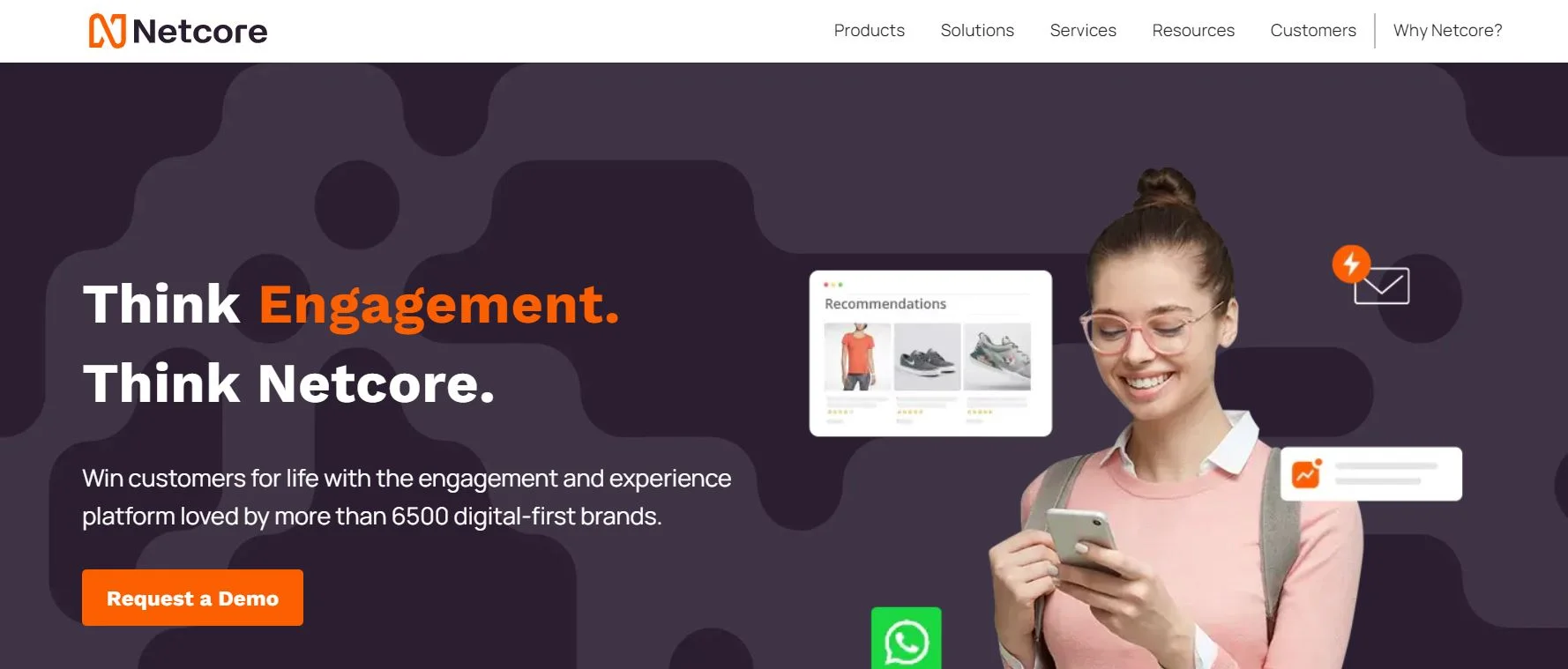
Netcore is a game-changing customer engagement platform that is dedicated to leveraging technology and to enhancing the customer experience for businesses across various industries. With its powerful suite of tools and solutions, Netcore empowers businesses to understand, engage, and delight their customers in a personalized and meaningful way.
1. Deep Customer Insights:
Netcore enables businesses to gain deep insights into their customers through advanced data analytics and segmentation. By understanding customer behavior, preferences, and needs, businesses can deliver tailored experiences that resonate with each individual.
2. Personalized and Contextual Engagement:
Netcore’s customer engagement solutions empower firms to forge personal, contextual bonds across varied channels, including email, SMS, push notifications, among others. By timing the perfect message to the ideal customer, businesses can elevate engagement and enhance conversions.
3. Journey Automation:
With Netcore’s journey automation capabilities, businesses can streamline and automate customer journeys from start to finish. From onboarding to post-purchase follow-ups, businesses can ensure consistent and seamless experiences that leave a lasting impression.
4. Real-time Omnichannel Orchestration:
Netcore allows businesses to orchestrate omnichannel experiences in real-time, ensuring a cohesive and consistent customer journey across all touchpoints. This enables businesses to provide a seamless experience regardless of the channel or device customers use.
5. AI-driven Personalization:
Leveraging artificial intelligence and machine learning, Netcore helps businesses deliver hyper-personalized experiences at scale. By analyzing customer data and behavior, Netcore’s AI algorithms can generate personalized recommendations, product suggestions, and content that align with each customer’s preferences.
6. Continuous Optimization:
Netcore provides businesses with the tools to measure, analyze, and optimize their customer experiences. Through real-time analytics, businesses can identify areas for improvement, make data-driven decisions, and iterate on their customer experience strategies.
2. Zendesk
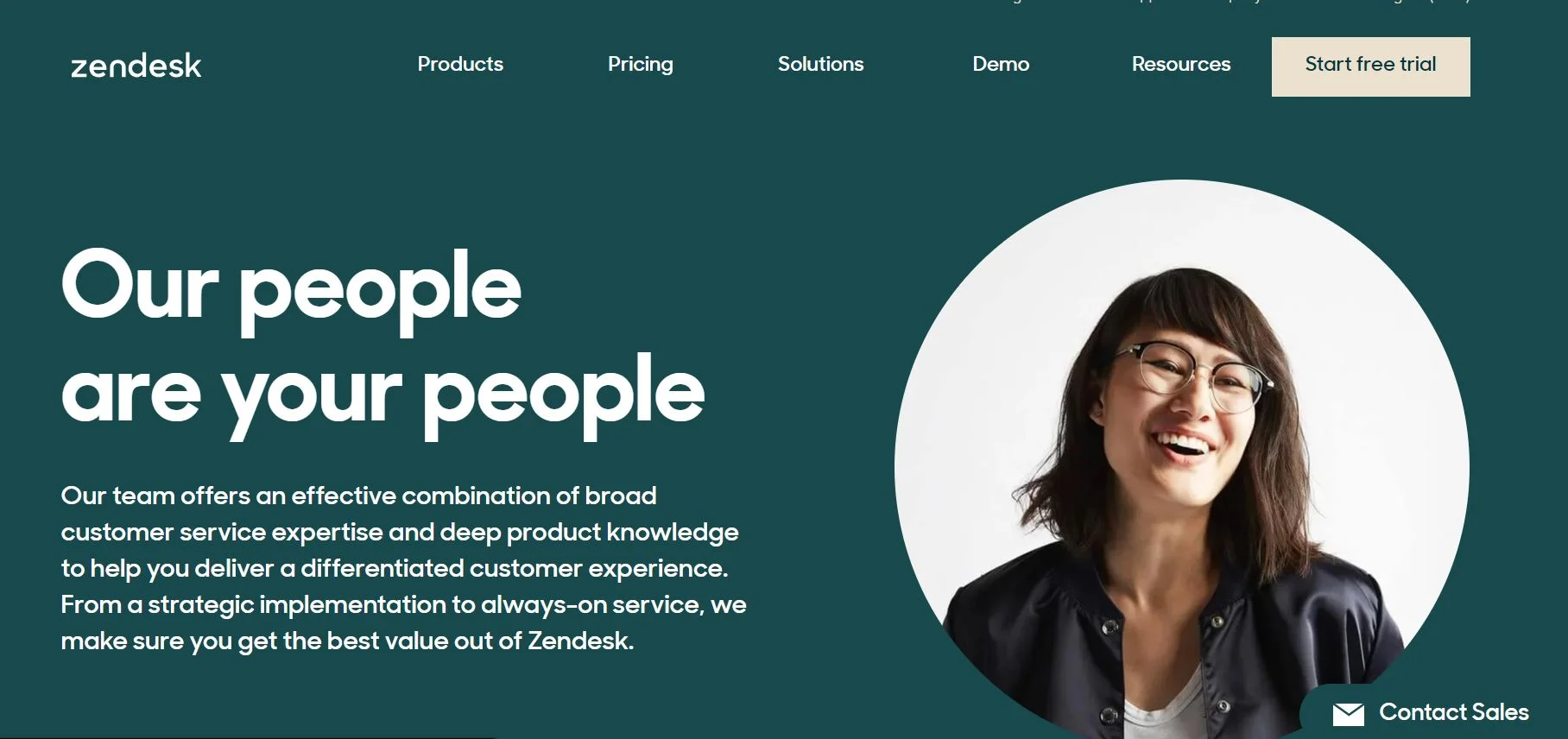
Zendesk is a leading customer engagement & experience platform designed to revolutionize the way businesses interact and engage with their customers. With a comprehensive suite of tools and features, Zendesk CX empowers businesses to deliver exceptional customer experiences that drive loyalty and satisfaction.
Here’s how Zendesk CX can transform your customer experience:
1. Seamless Omnichannel Support:
Zendesk CX enables businesses to provide seamless support across multiple channels, including email, chat, phone, social media, and more. Customers can reach out through their preferred channel, and agents have access to a unified view of interactions for a consistent and personalized experience.
2. Efficient Ticket Management:
Zendesk stands out as an effective customer engagement tool, centralizing all customer queries and support requisitions. Agents can track, prioritize, and resolve issues effectively, ensuring prompt and efficient resolution for customers.
3. Self-Service and Knowledge Base:
Zendesk CX allows businesses to build self-service portals and knowledge bases, empowering customers to find answers to their questions independently. This reduces the need for repetitive inquiries, enabling faster resolutions and enhancing customer satisfaction.
4. Automation and AI-powered Assistance:
Zendesk’s customer engagement software harnesses both automation and AI-driven features, refining the customer support journey. Chatbots and virtual assistants can handle routine queries, provide instant responses, and escalate complex issues to human agents when needed, improving efficiency and response times.
5. Analytics and Insights:
Zendesk CX provides robust analytics and reporting capabilities to track key performance metrics enlightening businesses about their customer engagement endeavors. Businesses can identify trends, measure customer satisfaction, and make data-driven decisions to enhance the overall customer experience.
6. Integrations and Customization:
Proving its mettle as a versatile customer engagement solution, Zendesk seamlessly blends with a range of business applications and platforms. The platform is highly customizable, enabling businesses to tailor their support processes to align with their unique needs and workflows.
3. Qualtrics XM
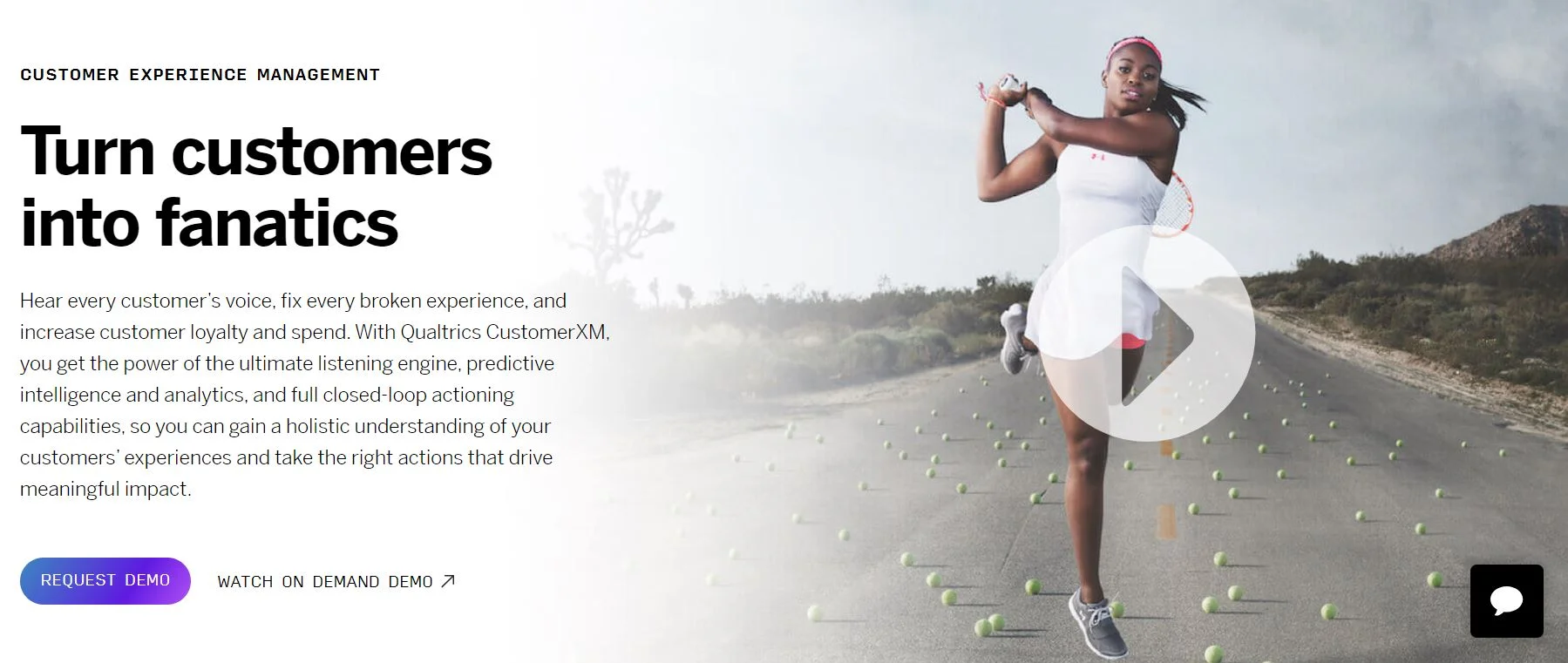
Qualtrics XM, a standout in the realm of customer engagement platforms, equips businesses to craft unparalleled experiences, thereby cementing customer loyalty. With its advanced features and capabilities, Qualtrics enables businesses to gain deep insights into customer preferences, collect real-time feedback, and take data-driven actions to improve the overall customer experience.
Here’s how Qualtrics can transform your customer experience:
1. Comprehensive Feedback Management:
Functioning as an adept customer engagement tool, Qualtrics orchestrates an all-encompassing feedback management ecosystem. Whether it’s through surveys, social media, or other feedback mechanisms, Qualtrics enables businesses to capture customer insights in real-time.
2. Customer Journey Mapping:
With Qualtrics, businesses can visualize and understand the customer journey from start to finish. By mapping out the touchpoints and interactions, businesses can identify pain points, areas for improvement, and opportunities to enhance the customer engagement at every stage.
3. Voice of the Customer (VoC) Analytics:
Elevating its stature as a potent customer engagement software, Qualtrics leverages advanced analytics capabilities to analyze and interpret customer feedback. By uncovering trends, sentiment, and key insights, businesses can gain a deeper understanding of customer needs and expectations, enabling them to make informed decisions and drive targeted improvements.
4. Personalization and Segmentation:
Within the vast arsenal of Qualtrics’ customer engagement solutions is the capability to segment and customize. By tailoring interactions and offers to specific customer segments, businesses can create more relevant and engaging experiences that resonate with their target audience.
5. Actionable Insights and Automation:
Qualtrics goes beyond data collection by providing actionable insights and automation features. Businesses can set up automated workflows and triggers based on specific feedback, allowing them to take immediate action and resolve customer issues proactively.
6. Continuous Improvement and Measurement:
With Qualtrics, businesses can continuously measure and track customer satisfaction and loyalty metrics. By monitoring key performance indicators (KPIs) and benchmarking against industry standards, businesses can identify areas for improvement and set goals to enhance the customer experience over time.
4. Salesforce 360

Salesforce 360 is a comprehensive customer engagement & experience platform that enables businesses to elevate their customer interactions and drive exceptional experiences. With its wide range of features and capabilities, Salesforce 360 empowers businesses to understand their customers better, engage with them effectively, and deliver personalized experiences that foster long-term loyalty.
Here’s how Salesforce 360 can revolutionize your customer experience:
1. 360-Degree Customer View:
Salesforce 360 provides a holistic view of each customer by consolidating data from various touchpoints and channels. This comprehensive customer profile allows businesses to gain deep insights into customer behavior, preferences, and needs, enabling them to deliver tailored experiences that resonate with each individual.
2. Intelligent Marketing Automation:
Functioning as an adept customer engagement tool, with Salesforce 360, businesses can automate marketing campaigns and communications based on customer segmentation and behavior. This intelligent automation ensures that the right message reaches the right customer at the right time, driving higher engagement and conversion rates.
3. Seamless Sales and Service Integration:
Salesforce 360’s robust customer engagement solution seamlessly integrates sales and service functionalities, enabling businesses to provide a unified and consistent experience across the entire customer journey. Sales teams can access customer information, history, and interactions, while service teams can resolve customer issues efficiently, resulting in enhanced customer satisfaction.
4. Personalized Customer Service:
Salesforce 360 allows businesses to deliver personalized customer service by leveraging real-time customer data. Service agents can access relevant customer information, anticipate needs, and provide proactive assistance, creating a seamless and personalized support experience.
5. AI-powered Insights and Recommendations:
With Einstein AI, Salesforce 360 offers advanced analytics and insights to drive data-driven decision-making. Businesses can uncover hidden patterns, identify customer trends, and receive intelligent recommendations to enhance the customer experience and drive business growth.
6. Community Engagement:
Salesforce 360’s customer engagement solutions champion the creation of thriving customer communities. This fosters customer engagement, enables peer-to-peer support, and empowers customers to find answers and solutions independently.
5. Adobe Experience Cloud
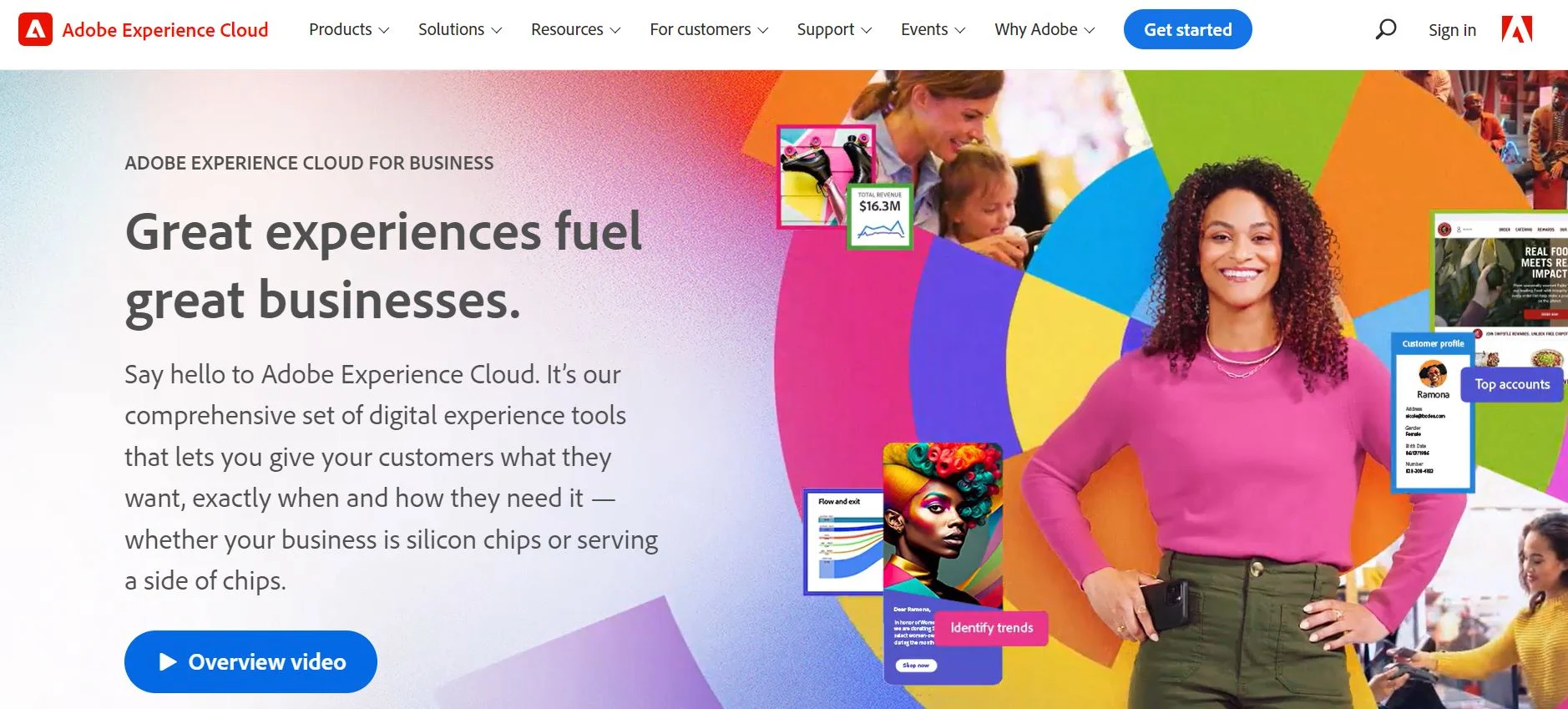
Adobe Experience Cloud stands out as a formidable customer engagement platform designed to radically reshape customer interactions. With its comprehensive set of solutions and tools, Adobe Experience Cloud enables businesses to deliver personalized and seamless experiences across multiple channels.
Here’s how Adobe Experience Cloud can enhance your customer experience:
1. Unified Customer Profiles:
Adobe Experience Cloud allows businesses to create unified customer profiles by consolidating data from various sources. This holistic view enables businesses to understand customer behavior, preferences, and interactions, leading to more personalized and targeted experiences.
2. Personalization at Scale:
Leveraging its prowess as a stellar customer engagement solution, Adobe Experience Cloud, businesses can leverage advanced personalization capabilities to deliver tailored experiences to individual customers. By analyzing customer data and behavior, businesses can create dynamic content, recommendations, and offers that resonate with each customer, fostering a deeper connection.
3. Omnichannel Engagement:
Adobe Experience Cloud enables businesses to engage with customers seamlessly across multiple channels, including web, mobile, social media, and email. By providing a consistent experience across all touchpoints, businesses can enhance customer satisfaction and drive higher engagement.
4. Intelligent Analytics and Insights:
Adobe Experience Cloud offers robust analytics and reporting features that provide valuable insights into customer behavior and campaign performance. Businesses can track key metrics, measure the impact of their customer experience initiatives, and make data-driven decisions to optimize their strategies.
5. Marketing Automation and Campaign Management:
With Adobe Experience Cloud, businesses can automate marketing campaigns and customer journeys, ensuring relevant and timely interactions. The platform provides advanced tools for segmenting customers, orchestrating multi-channel campaigns, and monitoring campaign performance for continuous improvement.
6. Experience-driven Commerce:
Adobe Experience Cloud enables businesses to create seamless and personalized commerce experiences. With integrated commerce capabilities, businesses can deliver tailored product recommendations, simplified checkout processes, and personalized promotions, enhancing the overall shopping experience.
Conclusion
Adopting a customer-centric approach acts as a prime customer engagement solution, metamorphosing your dialogues with your audience. It enables you to create seamless experiences across channels, anticipate customer needs, and deliver personalized engagements. And the best part? As you prioritize customer experience, you’ll also be enhancing the customer journey, making it more memorable and impactful.
Netcore presents an adept customer engagement platform that is set to redefine your customer-centric initiatives. With our user-friendly interface and seamless navigation, you can effortlessly create, manage, and deliver exceptional experiences across various channels.
Netcore’s customer engagement software facilitates sending customized communications, delving into customer metrics, procuring instantaneous insights from customer touchpoints, and making decisions rooted in data to enhance the customer pathway.
Book a demo with us today and explore how our powerful omnichannel platform can elevate your customer experience strategies. Don’t miss out on this opportunity to unlock the full potential of your customer relationships.








